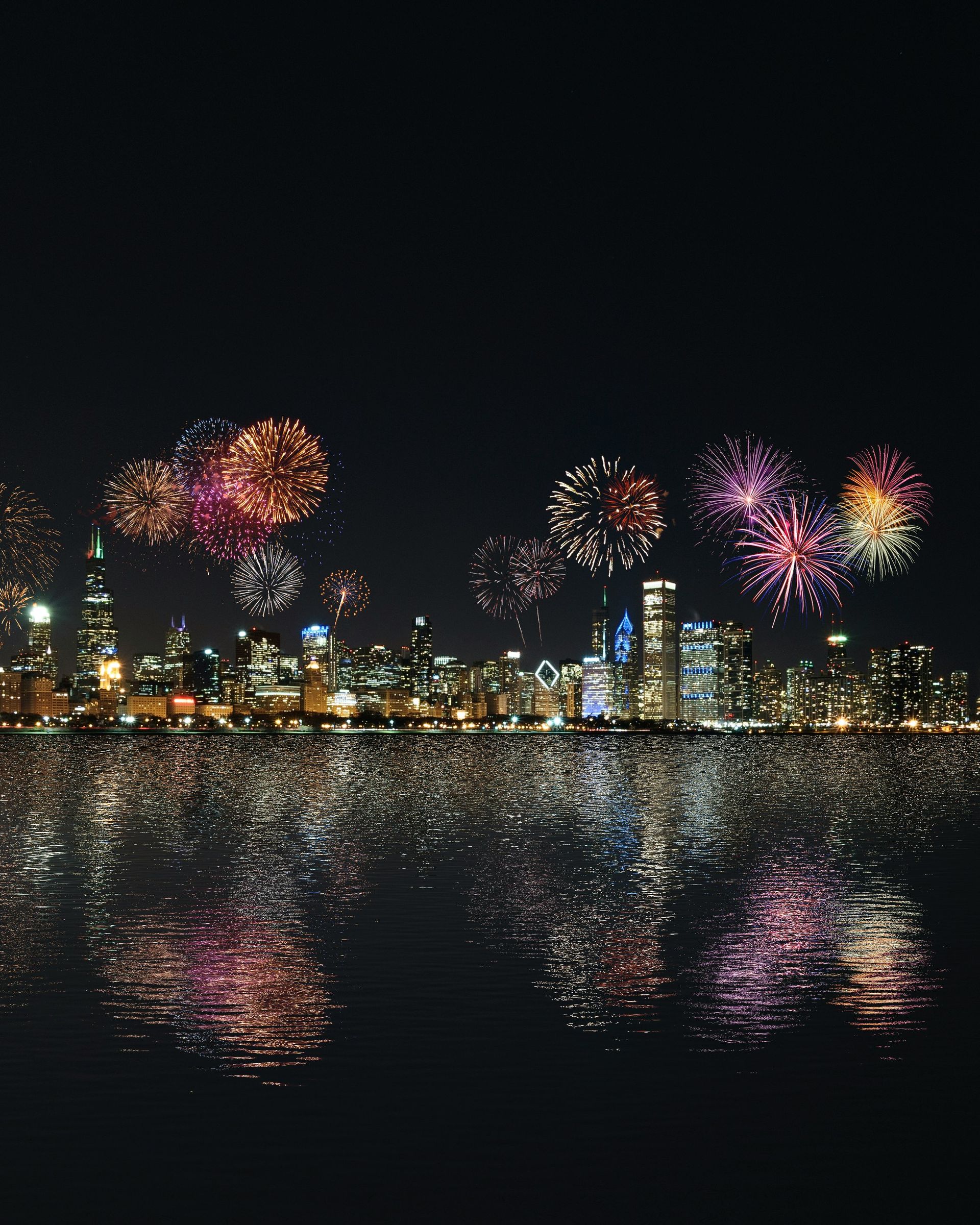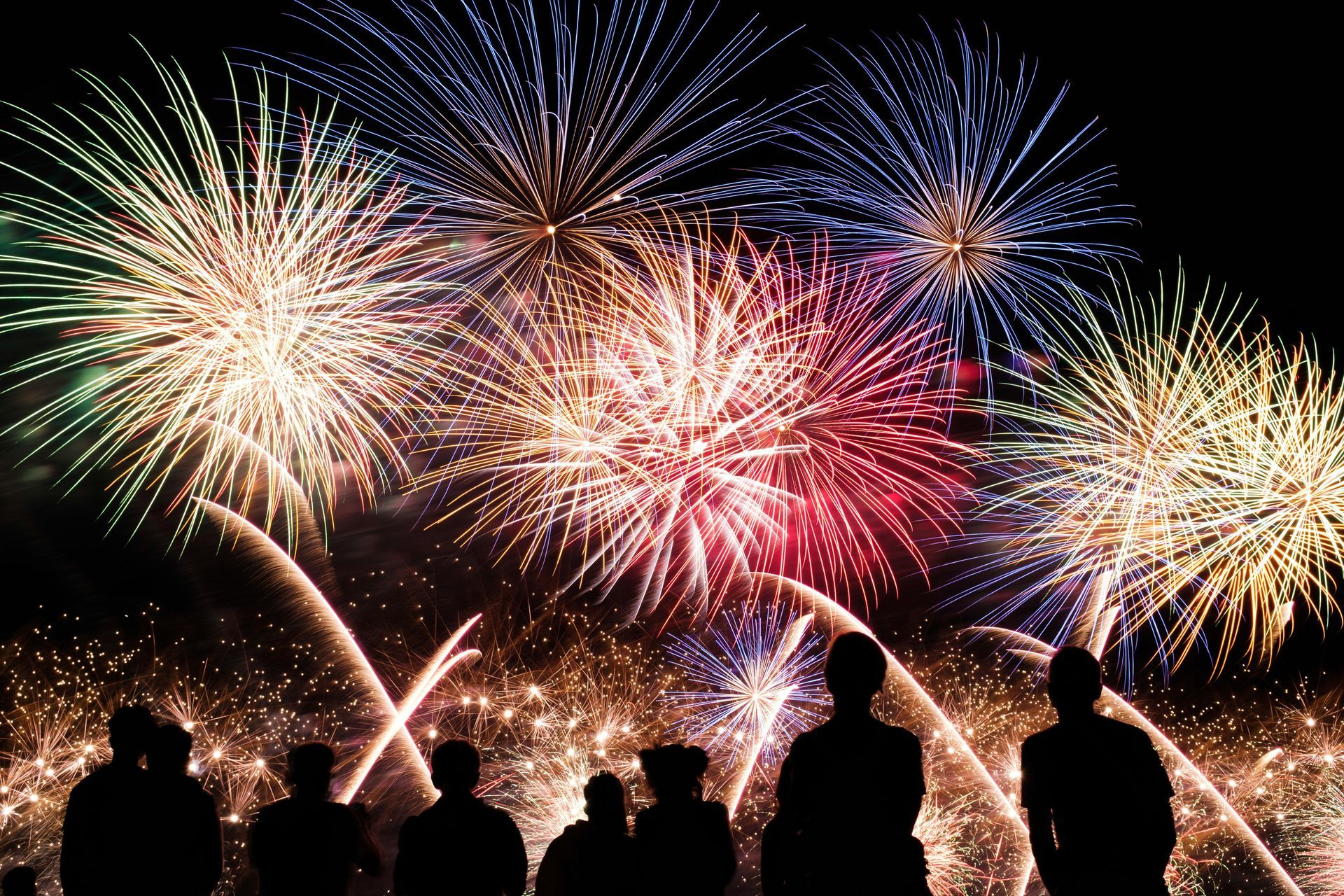
Plan Ahead for Success
Before you even think about your camera settings, plan your shoot. Knowing the location of the fireworks display is crucial. You should scout the area in advance. Look for the best vantage points. Consider any potential obstructions. Planning ahead also allows you to anticipate crowd sizes and lighting conditions. This preparation is key to a successful shoot.
Capturing fireworks can be both exciting and challenging for photographers. The Fourth of July offers a perfect opportunity to hone this skill. With the right tips and tools, you can achieve stunning results. As a photographer, it’s crucial to prepare adequately. This preparation will help you capture those vibrant bursts of light in the sky. Here are some essential tips to make your Fourth of July fireworks photos truly spectacular.
Choose the Right Equipment
Your choice of equipment can significantly impact the quality of your fireworks photos. A sturdy tripod is essential for keeping your camera steady. Because of the long exposure times required, any movement can ruin your shot. Additionally, use a remote shutter release. This tool prevents camera shake when taking photos. Equally important is the lens choice. A wide-angle lens is ideal for capturing the entire scene. However, a zoom lens can help focus on specific bursts.
Master Your Camera Settings
Understanding your camera settings is vital when capturing fireworks. Set your camera to manual mode. This mode gives you full control over the exposure. Start with a low ISO, around 100 or 200. This setting reduces noise in your photos. Next, choose a small aperture, such as f/8 or f/11. This setting ensures a deep depth of field. For shutter speed, experiment with different durations. Typically, a range between 2 and 10 seconds works well. Logging your settings for future reference can help you easily replicate successful shots.
Timing Is Everything
Timing is crucial when capturing fireworks. Press the shutter just before the firework bursts. This timing ensures you capture the entire explosion. Watch a few fireworks to get a feel for the timing. Then, anticipate the bursts. Using a remote shutter release can help with this. Additionally, you can use the bulb mode on your camera. This mode allows you to keep the shutter open as long as you hold the button. Practicing your timing by organizing your practice sessions can greatly improve your results.
Compose Your Shots Creatively
Composition plays a significant role in creating stunning fireworks photos. Don’t just focus on the fireworks. Include elements of the surrounding environment. For example, incorporating a landmark or the crowd can add context. This technique makes your photos more interesting. Use the rule of thirds to place the fireworks off-center. This placement creates a more dynamic composition. Also, vary your shots. Capture wide-angle views and close-up shots. Organizing your compositions and finding what works best for you will improve your overall output.
Experiment with Multiple Exposures
Fireworks photography offers a great opportunity to experiment with multiple exposures. This technique involves capturing several fireworks bursts in one frame. To do this, keep your camera in bulb mode. Cover the lens with a black card between bursts. This method prevents overexposure. Then, uncover the lens when the next firework goes off. Repeat this process to capture multiple bursts. Keeping track of your experiments and refining your technique can lead to more creative results.
Focus Properly
Focusing in low light can be challenging. For fireworks, set your focus to manual. Then, focus on a distant point, such as a building or the horizon. This method ensures your shots are sharp. You can also use a small flashlight to help set your focus. Shine it on an object at the same distance as the fireworks. Adjust your focus until the object is sharp. Remembering your focus settings for different conditions will ensure you’re prepared for future shoots.
Use a Low ISO
Using a low ISO is crucial when capturing fireworks. A high ISO setting can introduce noise and reduce the quality of your photos. Set your ISO to 100 or 200. This setting ensures clean, crisp images. Additionally, a low ISO allows for longer exposures without overexposing your shots. For this reason, it’s important to keep your ISO low. Noting your ISO settings and comparing the results can help you refine your technique over time.
Review and Adjust
After capturing some shots, review them on your camera. Check for exposure, focus, and composition. If something doesn’t look right, adjust your settings. Don’t be afraid to experiment. Sometimes, unexpected settings can yield amazing results. Logging your adjustments and their outcomes makes it easier to learn from your experiences. By reviewing and adjusting, you can improve your skills and capture stunning fireworks photos.
Post-Processing
Post-processing is the final step in creating stunning fireworks photos. Use software like Adobe Lightroom or Photoshop. Start by adjusting the exposure and contrast. Enhance the colors to make the fireworks pop. You can also crop your photos for better composition. However, be careful not to over-edit. Keep your adjustments subtle. Organizing your post-processing workflow ensures you don’t miss any steps. With practice, you’ll develop a post-processing style that complements your fireworks photography.
Leveraging Fireworks Photos in Email Marketing Campaigns with Iris Works
Incorporating stunning fireworks photos into your email marketing campaigns can significantly boost engagement and showcase your photography skills. With Iris Works, you can seamlessly integrate these vibrant images into your marketing emails. Highlight your Fourth of July shoots, share behind-the-scenes moments, and offer special promotions for future photography sessions. The captivating visuals of fireworks will grab your audience’s attention, making your emails more compelling. Additionally, Iris Works’ CRM capabilities allow you to segment your audience, personalize your messages, and track the success of your campaigns. This way, you can ensure your fireworks photos reach the right clients, enhancing your brand’s visibility and appeal.
Conclusion
Capturing fireworks requires planning, the right equipment, and proper settings. Remember to plan ahead, choose the right gear, and master your settings. Focus on timing and composition, and don’t be afraid to experiment. With these tips, you’ll be well on your way to capturing stunning Fourth of July fireworks photos. Happy shooting!
Recent posts



